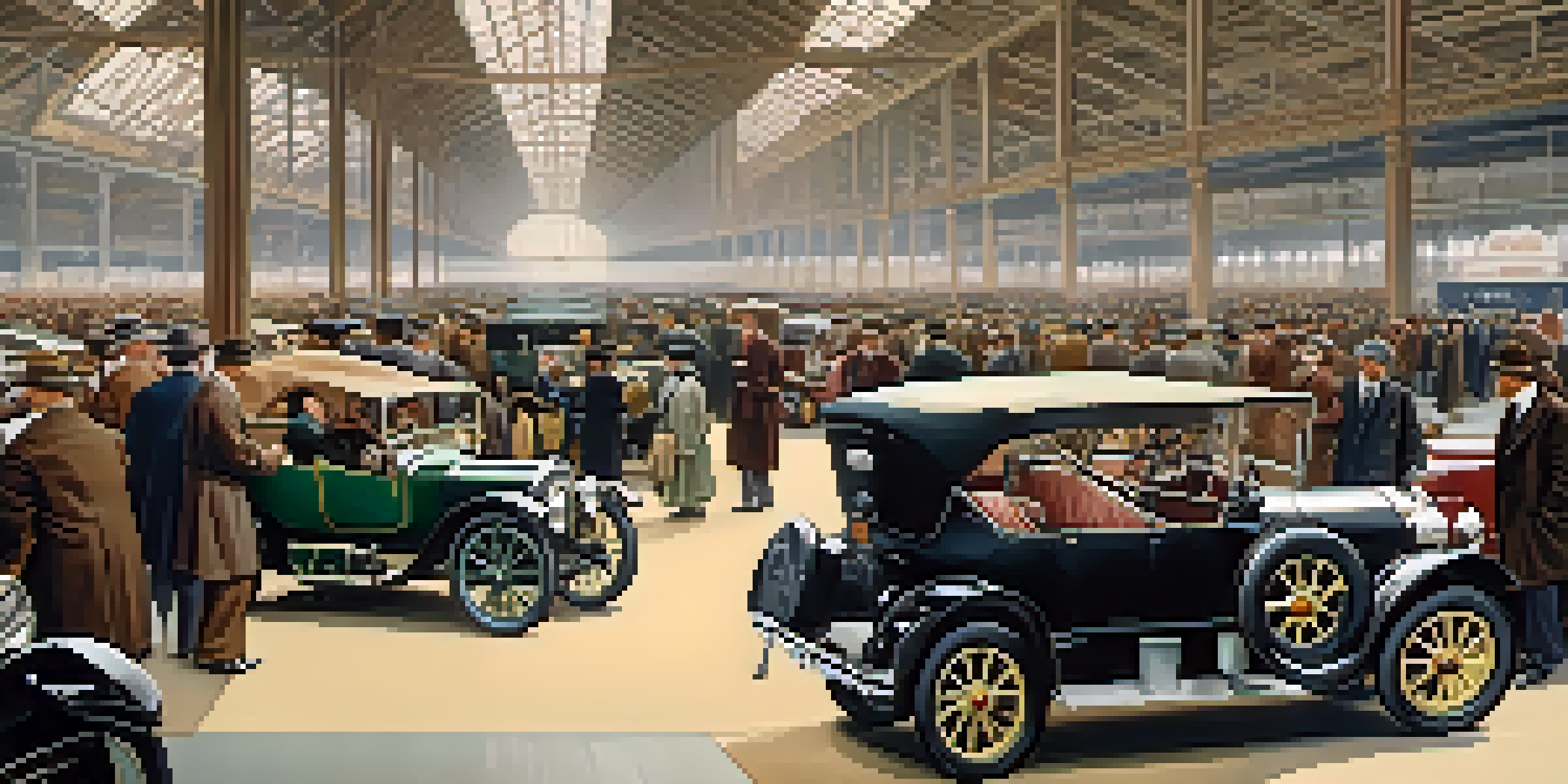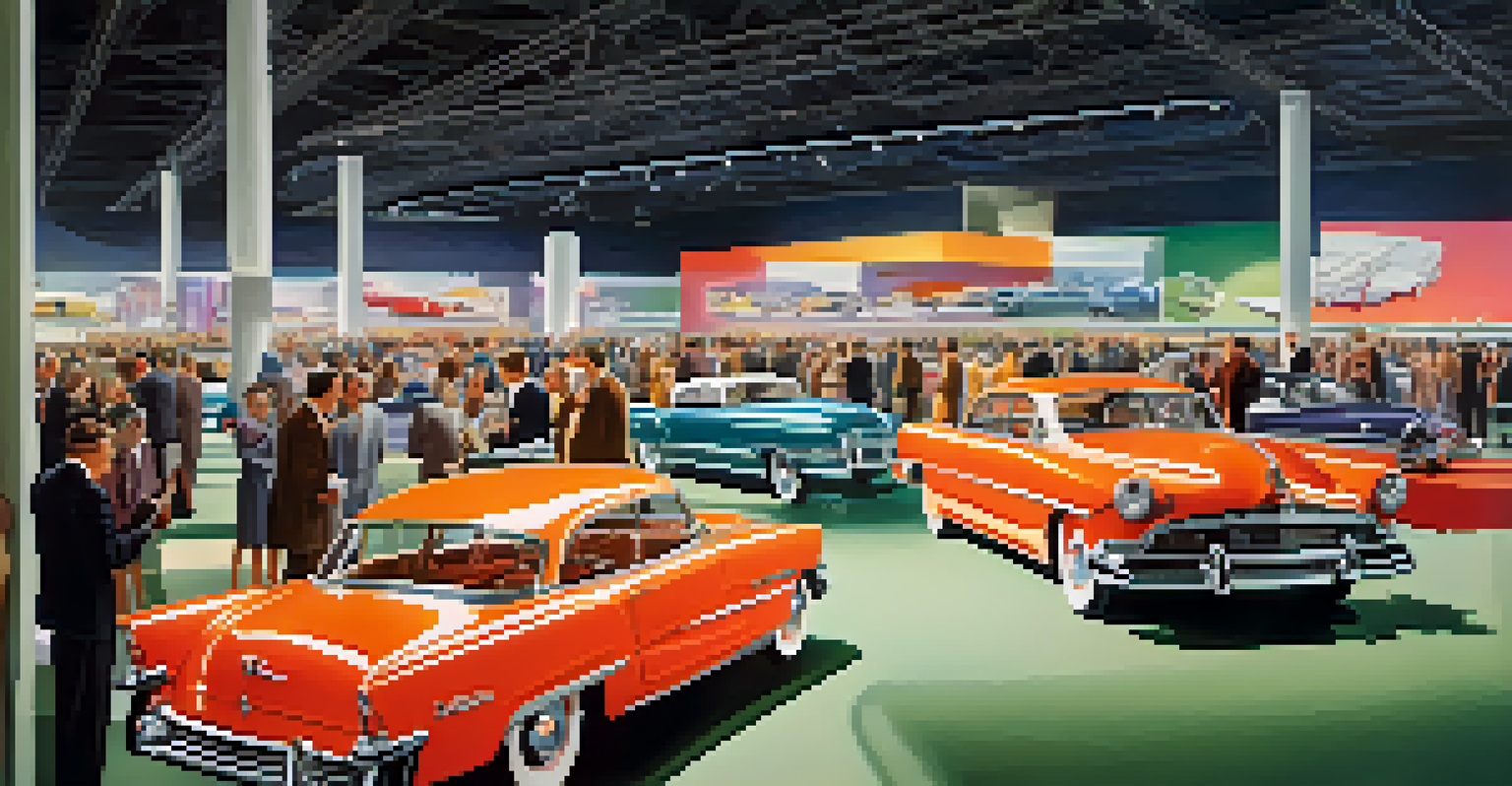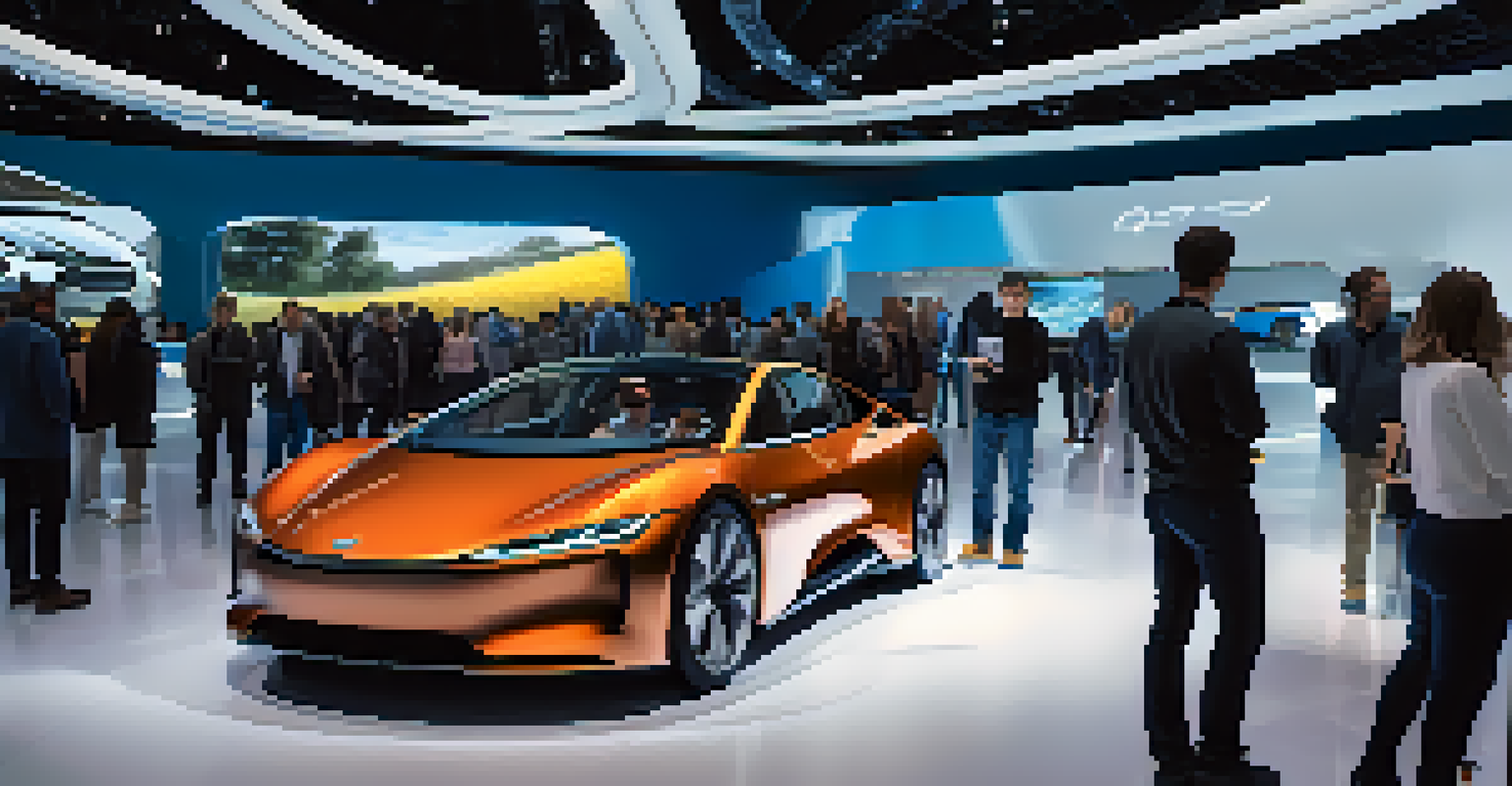Historical Evolution of Detroit's Auto Show Influence

The Birth of the Detroit Auto Show in 1907
The Detroit Auto Show, officially known as the North American International Auto Show (NAIAS), first opened its doors in 1907. It began as a modest exhibition with just a handful of local manufacturers showcasing their vehicles. However, this initiative quickly gained traction, reflecting the burgeoning automotive industry in Detroit, often dubbed the 'Motor City.'
The cars we drive say a lot about us.
As the years rolled on, the show evolved from a small gathering into a premier event that attracted automotive enthusiasts, manufacturers, and media from around the globe. The early shows were significant not only for their displays but also for the networking opportunities they provided for car makers. It became a hub for innovation and collaboration in the automotive sector.
The inaugural event laid the groundwork for what would become a vital tradition in Detroit. The auto show quickly established itself as a platform for introducing groundbreaking automotive technologies, setting the stage for its lasting influence on the industry.
The Rise of Global Participation in the 1950s
By the 1950s, the Detroit Auto Show had transformed into a truly international affair, attracting automakers from Europe and Asia. This era marked a significant shift as American car manufacturers were now competing on a global scale. Exhibitors began showcasing not only their latest models but also innovative designs and technologies that highlighted the growing international automotive landscape.

The 1950s also saw the introduction of concepts and prototypes, which became a staple at the show. These futuristic designs captured the imagination of the public and industry professionals alike, signaling a new era of automotive creativity. Companies used the platform to tease upcoming models, creating buzz and anticipation that would energize the market.
Detroit Auto Show's Historic Roots
The Detroit Auto Show began in 1907 as a small exhibition and evolved into a premier international event showcasing automotive innovation.
As the show grew in stature, it played a crucial role in establishing Detroit as a central hub for automotive innovation. The increased global participation helped to foster a spirit of competition, pushing manufacturers to continuously improve their offerings and engage with a wider audience.
The Impact of Economic Changes in the 1970s
The 1970s brought significant challenges to the automotive industry, including oil crises and economic downturns. These factors reshaped the Detroit Auto Show, as manufacturers began to focus more on fuel efficiency and smaller vehicle designs. The shift was a direct response to changing consumer demands and economic realities.
Innovation distinguishes between a leader and a follower.
During this period, the show also began to highlight emerging trends, such as environmental concerns and safety regulations. Automakers showcased their efforts to produce more sustainable vehicles, which was a relatively new concept at the time. This focus on innovation in response to economic pressures further solidified the show's role as a barometer for industry trends.
As the auto show adapted to these changes, it became a platform for dialogue about the future of the automotive industry. The 1970s set the stage for a more responsive and responsible approach to vehicle design, reflecting broader societal shifts.
The Digital Revolution and the 1990s Transformation
The 1990s ushered in the digital revolution, and the Detroit Auto Show was no exception. With the advent of new technologies, manufacturers began to integrate digital elements into their presentations. This transformation included everything from digital displays to interactive exhibits, enhancing the overall experience for attendees.
Additionally, the 1990s saw a rise in the importance of branding within the automotive industry. Companies realized that the auto show was not just about showcasing vehicles but also about creating a strong brand narrative. As a result, manufacturers began to focus on the lifestyle aspects of their cars, appealing to consumer emotions and aspirations.
Embracing Global Participation
By the 2000s, the show highlighted a diverse array of vehicles and innovations, reflecting the growing global landscape of the automotive industry.
This era of innovation allowed the Detroit Auto Show to remain relevant and engaging amidst the changing landscape. By embracing digital technology and branding strategies, the show positioned itself as an essential event for both industry insiders and consumers.
The Shift to a Global Stage in the 2000s
Entering the 2000s, the Detroit Auto Show further cemented its status as a global stage for the automotive industry. With increased participation from international manufacturers, the event showcased a diverse array of vehicles from around the world. This globalization of the auto show allowed it to highlight cutting-edge innovations from various markets.
The 2000s also marked a growing emphasis on sustainability and electric vehicles, as automakers began to pivot towards more eco-friendly options. The Detroit Auto Show became a platform for unveiling hybrid and electric models, reflecting a significant shift in consumer preferences and regulatory pressures. This focus on sustainability resonated with a new generation of car buyers seeking greener alternatives.
As the show adapted to these changes, it reinforced Detroit's legacy as a center for automotive excellence while embracing new trends. The shift towards a more global perspective enriched the event, making it a melting pot of ideas and innovations.
Challenges and Resilience in the 2010s
The 2010s presented a series of challenges for the Detroit Auto Show, including economic fluctuations and the rise of alternative auto shows. Despite these obstacles, the event showcased remarkable resilience. Organizers worked tirelessly to revitalize the show, introducing new formats and engaging experiences to attract visitors.
During this decade, the emergence of technology companies entering the automotive space added another layer of complexity. The show began to feature not only traditional automakers but also tech firms focused on autonomous vehicles and smart technologies. This shift highlighted the convergence of the automotive and tech industries, reshaping the future of mobility.
Future Focus on Innovation
Looking ahead, the Detroit Auto Show is set to continue influencing the automotive industry with a strong emphasis on electric vehicles and digital experiences.
The resilience of the Detroit Auto Show during the 2010s demonstrated its importance as a platform for innovation and discussion. By embracing change and evolving with the times, the event remained a vital force in the automotive landscape.
The Future of the Detroit Auto Show
As we look to the future, the Detroit Auto Show is poised to continue its legacy of influence within the automotive industry. With an increasing focus on electric vehicles, autonomous technology, and sustainability, the show will play a crucial role in shaping consumer perceptions and industry standards. The event is likely to showcase the next generation of innovations that will define the future of transportation.
Moreover, the integration of digital experiences will likely enhance engagement, allowing attendees to interact with vehicles and technologies in new ways. Virtual reality and augmented reality could become key components, providing immersive experiences that capture the essence of the automotive world.

As Detroit continues to evolve as a global hub for the automotive industry, the auto show will remain a critical platform for collaboration and creativity. By embracing change and adapting to new trends, the Detroit Auto Show will undoubtedly maintain its position as a cornerstone of automotive culture for years to come.